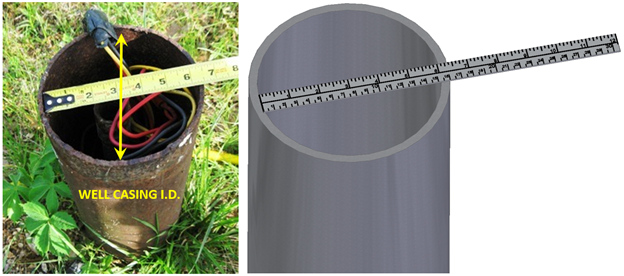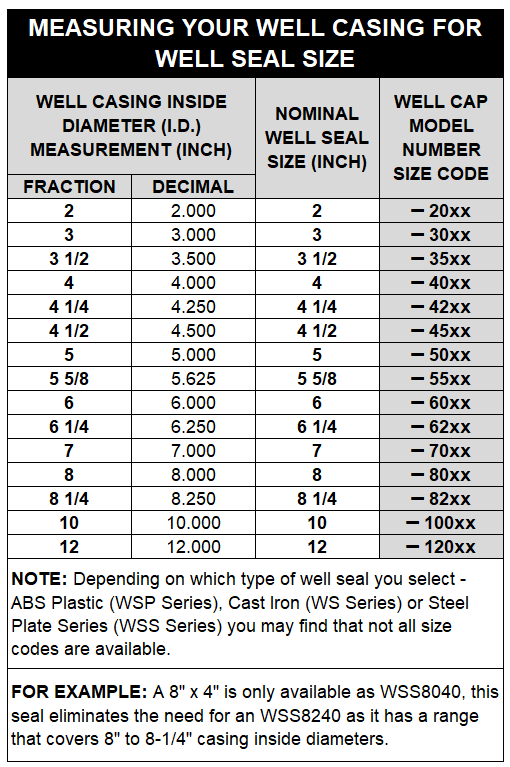How do I measure my well casing to determine what size of well seal I need?

Well seals are sized by the well casing inside diameter. What you need to measure is the inside diameter of the casing. Well seals are designed to make a compression seal against the inside wall of the casing. This measurement can be easily obtained using a ruler or measuring tape.

STEP #1 - Ensure the zero mark is on the edge of the casing inside wall. The use of a ruler is easier for this measurement. Using a tape measure can be difficult due to the hook on the end, which makes it hard to line up the zero mark with the edge.
TIP: You can put the 1” mark at the edge and subtract 1” from the measurement if the tab causes interference.
STEP #2 - Measure across the center point of the well casing to the opposite side. Move the ruler or tape side to side until you find the largest dimension (this ensures you are measuring at 180° to the start point). Make sure that the zero mark is still on the edge of the inside wall.
STEP #3 - Take note of the measurement to the nearest 1/16th inch, this measurement will correspond with the well seal size as per the chart below.
Determine the Drop Pipe Hole Size
When ordering a replacement well seal you will need to determine the drop pipe hole size; to do so you need to measure the outside diameter (O.D.) of the drop pipe(s).


CAUTION: Do not confuse a well seal for a well cap. Unlike well seals the well caps shown below are designed to seal on the outside of the well casing.

Related articles
- Why is the drop pipe hole on my WSS series steel plate well seal offset?
- Why is the drop pipe hole offset in my ABS well seal?
- Are Well Seals Watertight?
- Do you carry the special insert fittings that get installed through a well seal?
- What the difference between Iron Pipe Size / Nominal Pipe Size vs. Copper Tube Size?
- FPT or MPT thread size identification by actual dimensions of the fitting or valve thread.
